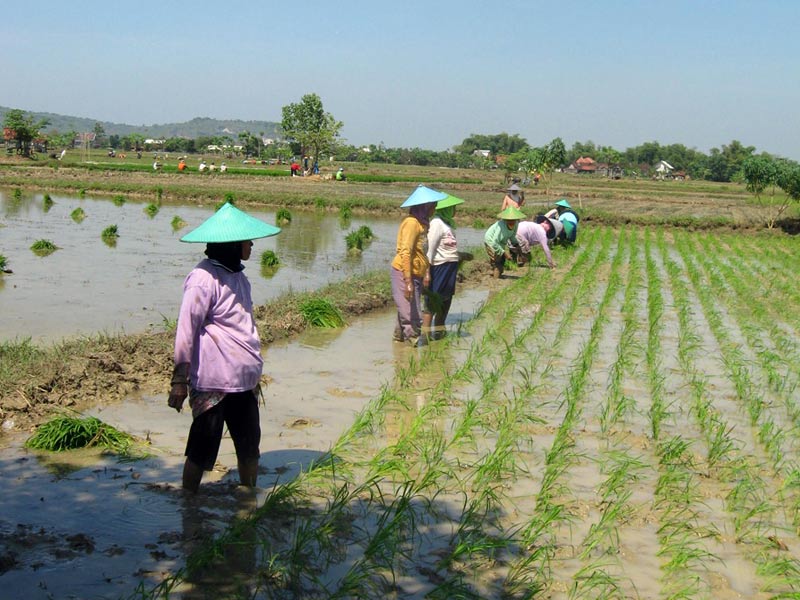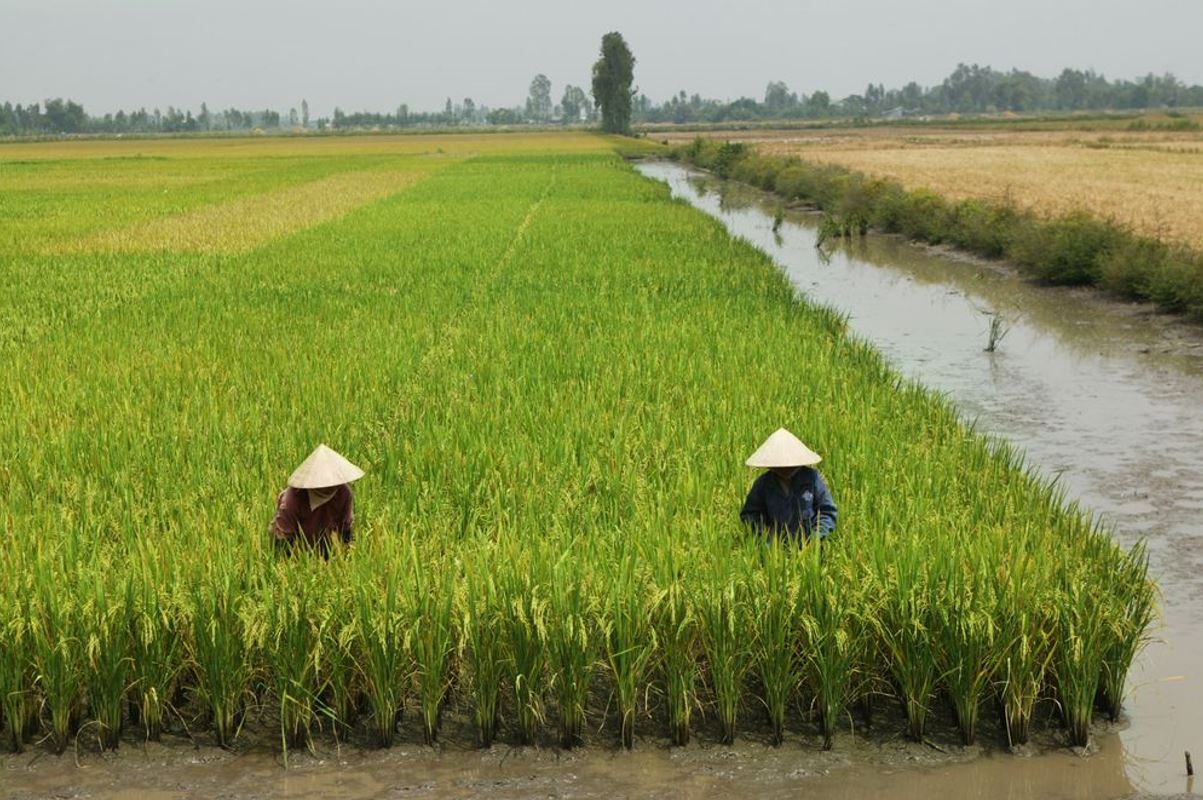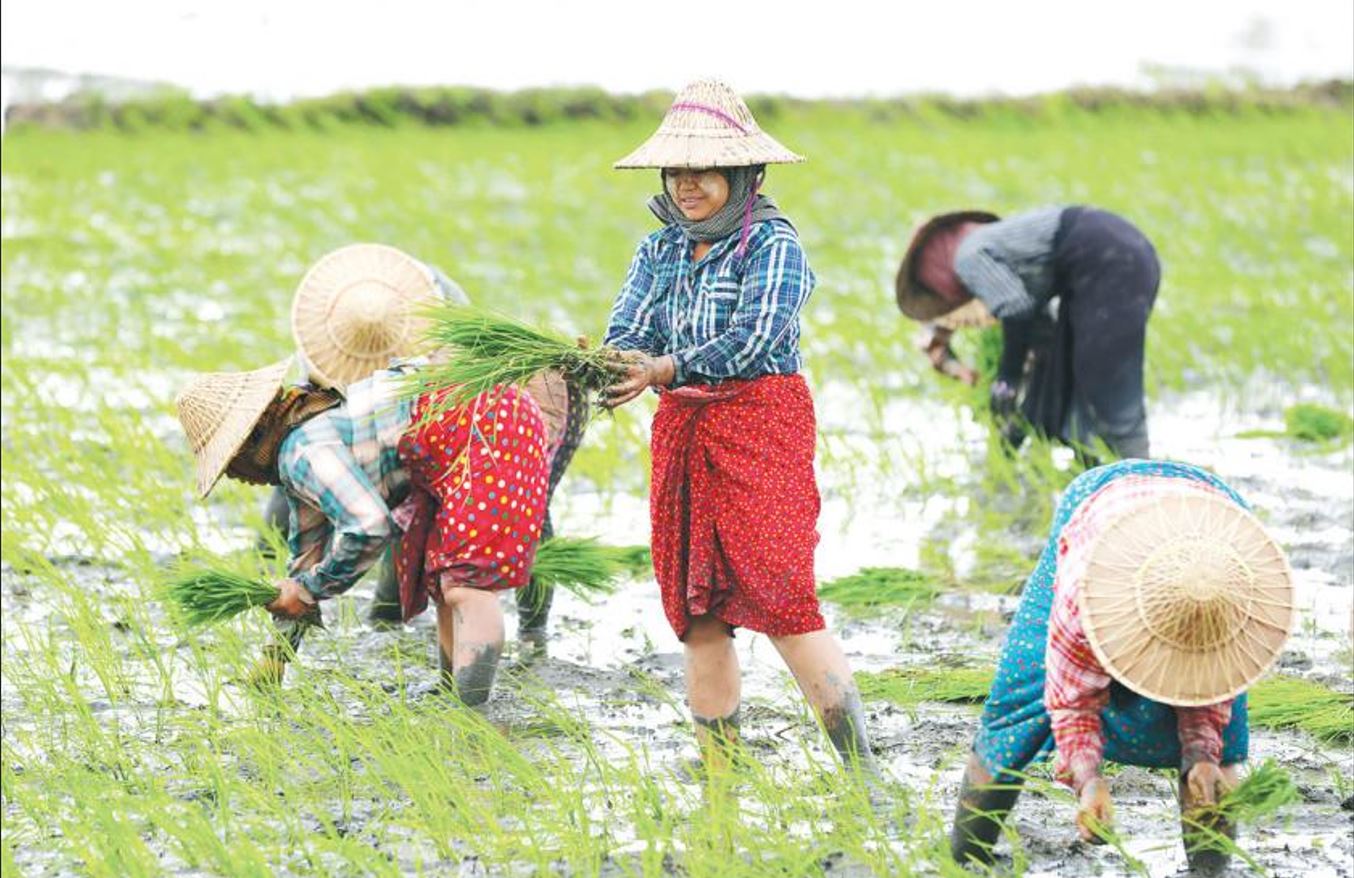CNI News
19 Jan 2023
Summer paddy cultivation has expanded in Rakhine State, according to paddy farmers there.
Rising paddy prices and increased water supply for dams contribute to expansion of summer paddy cultivation, Farmer U Maung Hti told the CNI.
He told the CNI, "I grew from 60 to 70 acres of paddy last year and have summer paddy cultivation upto 200 acres as irrigation staff dug a channel. Another reason is that rice prices this year are profitable for us."
According to statistics of the Rakhine State Agriculture Department, the cultivation of summer paddy in the state increased by about 700 acres from 800 acres last year to 1,500 acres this year.

Farmers in a paddy field.
Summer paddy in Rakhine State is grown in Kyauktaw, Mrauk-U, Minbya and Rathedaung townships and Kyauktaw township has the largest acreage of summer paddy. Water irrigation is facilitated by the Department of Water Resources and Irrigation while the Agriculture Department offers seeds.
Water supply for summer paddy is irrigated from rivers and dams and some paddy fields, which are located far away from rivers, have faced difficulties, Farmer U Than Win Swe told the CNI.
He said, "We prepared to cultivate summer paddy at first but water did not flow to our fields through irrigation channels because they are about 400 feet away from the pump. Officials form the DWRI told us they would magane to irrigate our fields.
First, we expected to cultivate about 100 acres of paddy but we decided to cultivate only about 30 acres as we are worried about irrigated water.

Two women farmers in a paddy field.
For the benefits of farmers and exports, paddy should be cultivated twice a year in Rakhine State and it is necessary to implement irrigation projects and river water pumping projects properly, according to farmers.
There are about 10 dams in Rakhine State but summer paddy cultivation has dropped in the state as water supply from the dams is unpredictable. There are one million acres of land for paddy in Rakhine State but summer paddy is cultivated on only about 300,000 acres of paddy fields.




